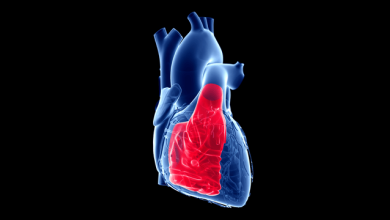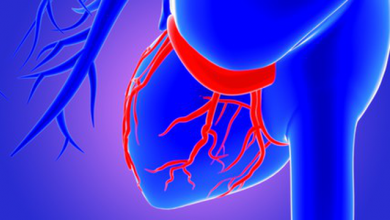Search results
Author(s):
Chiara Di Filippo
,
Beatrice Bacchi
,
Carlo Di Mario
Added:
3 years ago
Takotsubo syndrome (TTS) is a transient form of acute heart failure that mimics an acute coronary syndrome (ACS), with comparable acute adverse outcome.1 Many hypotheses have been formulated, but the pathophysiology of TTS is still not fully understood. Recently, it was demonstrated that specific alterations in neurological response and sympathetic activation after emotional stimuli are present…
View more
Author(s):
Erwin Oechslin
,
Rolf Jenni
Added:
3 years ago
Non-compaction of the myocardium is gaining prominence as a rare, distinct cardiomyopathy characterised by the presence of numerous, excessive prominent trabeculations and deep intertrabecular recesses which communicate with the left ventricular cavity. Two decades of research have identified a new disease - firstly, its morphologic and clinical characteristics were described on clinical…
View more
Author(s):
Erwin Oechslin
,
Rolf Jenni
Added:
3 years ago
Non-compaction of the myocardium is gaining prominence as a rare, distinct cardiomyopathy characterised by the presence of numerous, excessive prominent trabeculations and deep intertrabecular recesses which communicate with the left ventricular cavity. Two decades of research have identified a new disease - firstly, its morphologic and clinical characteristics were described on clinical…
View more
Author(s):
Peter Ong
,
Astrid Hubert
,
Maike Schwidder
,
et al
Added:
10 months ago
Author(s):
Astrid Hubert
,
Andreas Seitz
,
Valeria Martínez Pereyra
,
et al
Added:
3 years ago
Coronary artery spasm (CAS) is an established cause for anginal chest pain, the cardinal symptom of myocardial ischaemia, in patients with angiographically unobstructed coronary arteries. Evidence from large clinical studies has revealed that about 50% of patients undergoing diagnostic coronary angiography for suspected coronary artery disease (CAD) had either normal or near normal coronary…
View more
Author(s):
Mary N Sheppard
Added:
3 years ago
Takotsubo syndrome is an acute reversible heart failure syndrome, which is increasingly recognised by coronary angiography for patients with acute ‘cardiac’ chest pain.1 It is a distinct disease entity from acute coronary syndrome, although the initial presentation has similar features to either ST elevation myocardial infarction (STEMI) or non-ST elevation myocardial infarction (NSTEMI). Early…
View more
Author(s):
Alexandros Protonotarios
,
Perry Elliott
Added:
3 years ago
Until the 20th century, conventional medicine relied almost exclusively on observable characteristics to classify and treat human disease.1 Even in the modern era, physicians define diseases using phenotypic similarities and employ relatively simple algorithms to interpret diagnostic tools and plan treatment. The advent of low-cost genetic sequencing and its introduction into clinical care…
View more
Author(s):
Ying X Gue
,
Rahim Kanji
,
Sabiha Gati
,
et al
Added:
3 years ago
Cardiovascular disease is the leading cause of death globally, with 85% of cardiovascular deaths attributed to acute coronary syndrome (ACS) and stroke.1 The development of coronary atherosclerosis and subsequent plaque disruption, predominantly from plaque rupture or erosion, is responsible for the majority of ACS presentations. Persistent occlusion of the coronary artery due to thrombus,…
View more
Author(s):
Gianfranco Sinagra
,
Michele Moretti
,
Giancarlo Vitrella
,
et al
Added:
3 years ago
According to the latest position statement of the European Society of Cardiology (ESC), cardiomyopathies (CMP) are defined as “myocardial disorders in which the heart muscle is structurally and functionally abnormal, in the absence of coronary artery disease, hypertension, valvular disease and congenital heart disease sufficient to cause the observed myocardial abnormality”.1
CMP may be…
View more
Managing Cardiovascular Risk in Patients with Type 2 Diabetes - Challenges and Opportunities
Author(s):
Lars Rydén
,
Linda Mellbin
,
Klas Malmberg
Added:
3 years ago
Article















